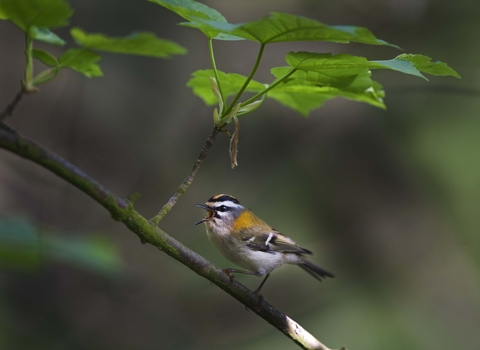
Firecrest ©David Tipling/2020VISION
Firecrest
The tiny firecrest vies with the goldcrest for the title of the UK's smallest bird. Once just a visitor, the firecrest can now be found breeding in woodlands in the south of England.
Scientific name
Regulus ignicapillaWhen to see
January to DecemberSpecies information
Category
Statistics
Length: 9cmWingspan: 14cm
Weight: 6g
Classified in the UK as Green under the Birds of Conservation Concern 5: the Red List for Birds (2021). Protected in the UK under the Wildlife and Countryside Act, 1981.
